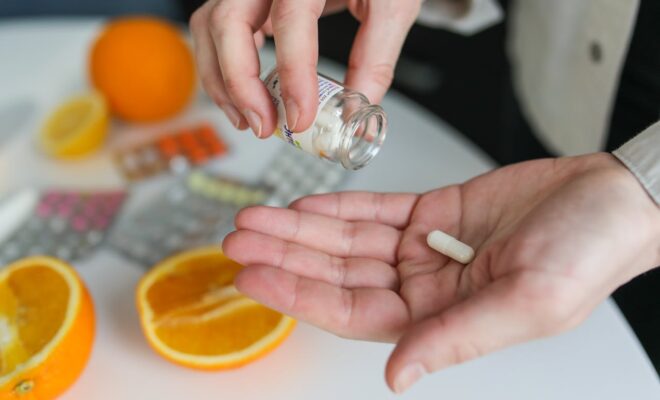
Bone Appétit: The Ultimate Guide to Healthier and Stronger Bones
Your back hurts and your leg aches, after you hit your golden jubilee. Your doctor prescribed a bone supplement in your routine check-up. Or, your mother nags you when you skip that glass of milk while you hurry to the school bus.
Bone health is an integral part of a woman’s health at every age. Your bones form the walls and the pillars of your body. Your bones provide more than just a shape to your body—they’re dynamic structures that support your body, protect your vital organs, and store essential minerals. Maintaining bone health is crucial, not just for avoiding fractures, but also for overall well-being. Stronger and healthier bones are key to the vitality of your health and a strong determinant of the quality of your life.
However, like everything else in life, your bone health isn’t guaranteed by devouring a magical pill. Instead, you proactively build it by feeding it well every meal with necessary nutrients and subject it to the right amount of stress and resistance throughout life. This blog is your guide to healthier and stronger bones.
1. Diet:
Have you noticed what makes a recipe great? It is not the domination of a single ingredient. Rather, it is the presence of various ingredients in just the right amount that gives joyrides to your palate. Just like a great recipe relies on the perfect blend of ingredients, strong bones depend on a mix of essential nutrients. Here are the star players:
- Calcium: The Bone Builder
Just like cement makes the walls of your home stronger and unbreakable, calcium is the tough guy in the bone kingdom. Calcium is what makes your bones hard. It imparts density and strength to your bones.
If you are looking for rich sources of calcium, look into the showering udders of cows and buffalos. All dairy products are excellent sources of calcium. Leafy greens like kale and collard greens are another rich source. Fancy an almond snack? Seeds and nuts are little packed wallets of calcium. If your dietary intake doesn’t suffice, your doctor will prescribe a pill that provides a sufficient amount of calcium required by your body.
- Vitamin D: The Calcium Helper
If calcium is the protagonist of the bone saga, vitamin D plays a supporting role. Without enough vitamin D, your body fails to absorb and your bones fail to incorporate calcium.
Rich sources of vitamin D are fatty fish like salmon, mackerel, and sardines. Eggs and fortified dairy products will also replenish your vitamin D reserves.
Sunlight is another powerful source of manufacturing vitamin D inside your body. Spend some time outdoors to capture the ultraviolet rays required to synthesize vitamin D. Just 15-30 minutes of sunlight will ameliorate your vitamin D levels.
- Magnesium and Vitamin K: The Unsung Heroes
Magnesium helps your body absorb calcium. It also assists in bone formation. Vitamin K promotes bone mineralization.
Eat plenty of nuts, seeds, whole grains, and legumes to replenish your body’s magnesium stores.
Graze on Leafy greens, such as spinach and kale. They are excellent sources of vitamin K.
- Protein
If calcium is the cement in your bones, proteins make all the remaining concrete. The matrix, or the foundations of your bones are made of protein. Make sure you’re getting enough to support bone repair and growth. Good sources include lean meats, eggs, and legumes.
2. Exercise: Move Your Bones
You have heard a good workout strengthens your muscles. But, it also fortifies and strengthens your bones.
- Weight-bearing exercises force you to work against gravity, which helps build and maintain the density of your bones.
- ·Strength training builds muscle which resultantly helps support and protect your bones.
- Engaging in flexibility and balance exercises such as yoga stretching reduces your risk of falls and fractures.
3. Avoid Fractures:
As you enter into your post-menopausal years, the density of the bone progressively decreases. Your bones become less dense and hence fragile. You are at a greater risk of fractures at this age. Even worse, your bone healing after a fracture, called bone remodeling, is also severely compromised. Your best strategy to avoid this catastrophe is to prevent falls and accidents.
Take care, especially at the stairs inside your home. You can consult refutable safety companies like Age Co Mobility to build your stairlift along the stairs in your home.
4. Avoid Smoking and Excessive Alcohol
You already know the villains of the human health. Both smoking and excessive alcohol consumption can weaken your bones. If you smoke, seek support to quit, and limit alcohol to moderate levels.
Join a support group or use a mobile app to track your smoking cessation or alcohol moderation journey. Celebrate your progress with non-alcoholic rewards.


You must be logged in to post a comment Login